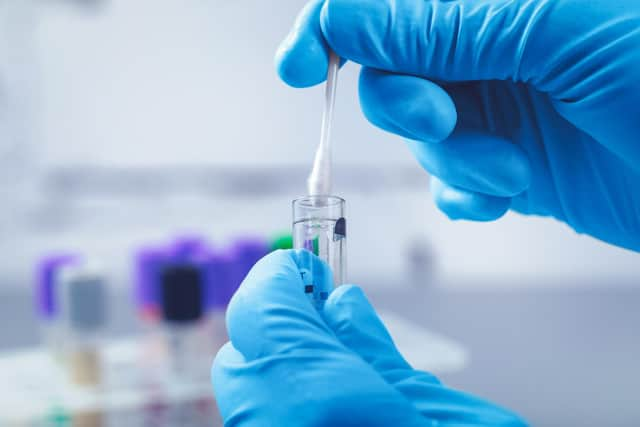The Yorkshire areas with highest Covid infections in the past week as national cases spike
Across the UK as a whole, 4.26m people were likely to have had coronavirus last week - just short of the 4.3m in the first week of 2022, which was the highest total since estimates began.
The steep rise in infections across much of the country is being driven by the Omicron BA.2 variant, a more transmissible form of Omicron, the Office for National Statistics (ONS) has said.
Advertisement
Hide AdAdvertisement
Hide AdIt comes as a second dataset shows that Yorkshire and The Humber saw more than 594 new cases per 100,000 people for the week ending March 17.


The highest increase was in Rotherham, South Yorkshire with 1483 new cases based on tests taken between March 11 and 17 compared to 824 cases based on tests taken between March 4 and 10 - an 80 per cent increase.
Sheffield was the second area in the region to be affected the most with a 75 per cent increase in cases between March 11 to 17, which was 3600, and March 4 to 10 which was 2,057 cases.
Richmondshire in North Yorkshire saw an increase of more than 70 per cent with 328 cases recorded between March 11 and 17 and 192 between March 4 to 10.
Advertisement
Hide AdAdvertisement
Hide AdThe city had 1,777 cases for March 11 to 17 and 1,246 the week before.
Selby and Harrogate were also some of the region’s least affected areas based on percentage increases.
Combined with the lifting of many restrictions and waning effectiveness of boosters, the BA.2 variant is now responsible for more than four in five infections across England, further analysis by the Wellcome Sanger Institute reveals. Positive Covid tests from the week to 12 March found 84 per cent were the subvariant, branded ‘Stealth Omicron’, up from 74 per cent the week before.
In Yorkshire and the Humber, Scarborough, Kirklees, York, Harrogate and Barnsley were found to have the highest rates of Stealth Omicron.
Advertisement
Hide AdAdvertisement
Hide AdDr Stephen Griffin, professor of medicine at the University of Leeds, said the combination of the BA.2 variant and the relaxation of Covid restrictions is “causing a massive resurgence of infection” with a “worrying” spread among older age groups.
He added: “Blinding ourselves to this level of harm does not constitute living with a virus infection, quite the opposite. Public health has seemingly dropped dramatically on the list of this Government’s priorities, to the detriment of the UK population as a whole.”
Separate figures from NHS England show just over half of all patients in hospital with Covid-19 are being treated primarily for something else.
The proportion of patients in hospital “with” Covid-19 rather than “for” Covid-19 - 55 per cent as of March 22 - is another sign the current wave has not led to the same sort of pressure on critical care as in previous waves.
Advertisement
Hide AdAdvertisement
Hide AdEngland’s chief medical officer Professor Sir Chris Whitty warned this week that the jump in infections is causing pressure on the NHS, with hospital admissions likely to carry on increasing over the next few weeks, but that high rates of transmission were not translating into intensive care cases and deaths.
